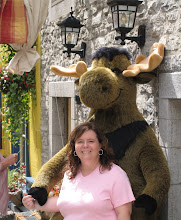Students suffer from test anxiety, they can be having a bad day on the day of the test, the test may not provide scenarios that are familiar to all students, or they can just not be good test takers. Do these types of things get factored in? I can tell you from my experience - no. None of those things matter. The only thing that seems to matter is the final score. These tests cannot provide an accurate rating of a students knowledge. I feel that report cards are the accurate portraits of a students performance and knowledge. Why don't we place more value on that?
These tests are also used as a gauge (in some cases) of a teachers performance. Some school administrators use test scores to assist in evaluating a teacher's effectiveness. With the pressure the county as well as the federal government ties to the results of these tests, it's no wonder there is so much focus on them. BUT does student performance give an accurate picture of a teachers effectiveness? Students overall progress throughout the year is a more effective way to gauge this.
There needs to be standards, there needs to be levels of acceptance. Are there better ways to determine these things? I think so. What are they? Isn't that the ultimate question?

